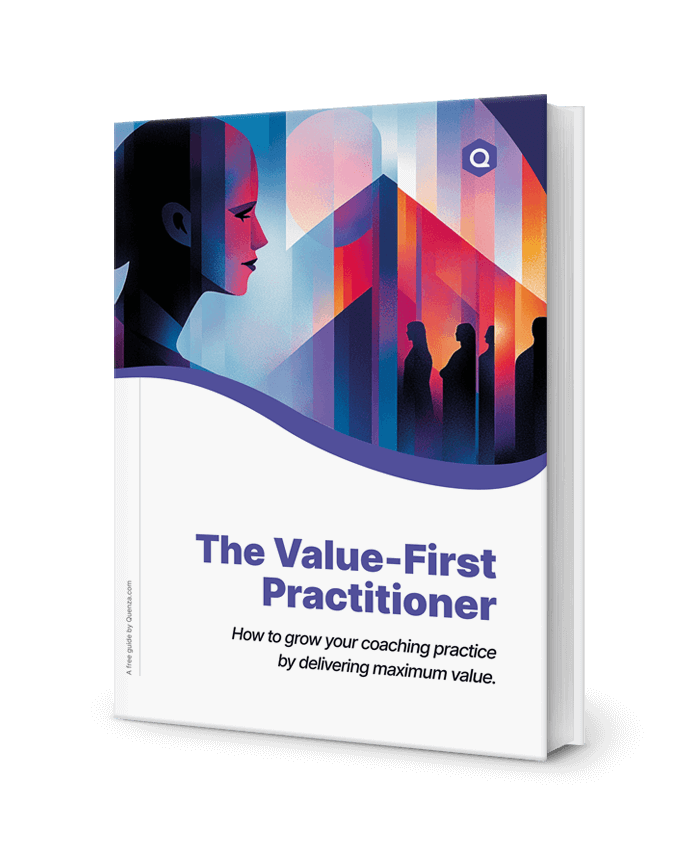Domestic violence is a pervasive issue that affects millions of individuals and families worldwide. It encompasses various forms of abuse, including physical, emotional, psychological, and financial control within intimate relationships. The impact of domestic violence extends far beyond the immediate victims, affecting children, extended family members, and entire communities.
Recognizing the devastating effects of domestic violence, it’s crucial to understand the importance of effective interventions. These interventions play a vital role in not only addressing immediate safety concerns but also in promoting long-term healing and breaking the cycle of abuse. From crisis management to recovery support, a comprehensive approach to domestic violence intervention can make a significant difference in the lives of survivors and their families.
This article explores the various stages of intervention in domestic violence cases, highlighting the critical components that contribute to successful outcomes. By understanding these interventions, we can work towards creating safer communities and supporting those affected by domestic violence on their journey to recovery and empowerment.
Understanding Domestic Violence
To effectively address domestic violence, it’s essential to have a clear understanding of its nature and dynamics. Domestic violence is not limited to physical abuse; it encompasses a range of controlling behaviors designed to exert power over an intimate partner [1].
| Type of Abuse | Description | Examples |
|---|---|---|
| Physical | Use of physical force causing injury or trauma | Hitting, pushing, choking, using weapons, destroying property |
| Emotional | Behaviors that undermine self-worth and mental health | Constant criticism, humiliation, gaslighting, name-calling |
| Financial | Controlling or exploiting financial resources | Withholding money, sabotaging employment, controlling all finances |
| Sexual | Non-consensual sexual acts or coercion | Forced sexual activity, reproductive coercion, unwanted touching |
| Psychological | Behaviors causing fear or diminishing autonomy | Threats, isolation from friends and family, excessive jealousy |
Types of domestic violence include:
- Physical abuse: Involving bodily harm or threats of violence
- Emotional abuse: Using manipulation, humiliation, and constant criticism
- Psychological abuse: Tactics like gaslighting and isolation
- Financial abuse: Controlling financial resources and independence
- Sexual abuse: Non-consensual sexual acts or coercion
The cycle of abuse typically follows a pattern [2]:
- Tension building: Stress accumulates, communication breaks down
- Incident: An abusive episode occurs
- Reconciliation: The abuser apologizes, makes excuses, or blames the victim
- Calm: A period of relative peace, often referred to as the “honeymoon phase”
Understanding this cycle is crucial for both victims and those providing support. It helps explain why leaving an abusive relationship can be challenging and why targeted interventions are necessary.
The effects of domestic violence are far-reaching, impacting:
- Victims: Physical injuries, mental health issues, PTSD, low self-esteem
- Children: Behavioral problems, emotional distress, risk of future victimization or perpetration
- Families: Strained relationships, financial difficulties, instability
By recognizing these aspects of domestic violence, we can better appreciate the complexity of the issue and the need for comprehensive interventions.
The Role of Early Intervention
Early intervention in cases of domestic violence is crucial for preventing escalation and minimizing long-term harm. Recognizing the signs of abuse and taking action quickly can make a significant difference in the lives of those affected.
Importance of timely support:
- Prevents further harm and potential fatalities
- Reduces long-term trauma for victims and children
- Increases the likelihood of successful intervention and recovery
Identifying warning signs:
- Controlling behavior and excessive jealousy
- Isolation from friends and family
- Frequent put-downs or humiliation
- Financial control or restrictions
- Physical aggression, even if not directed at the partner
Early intervention strategies:
- Education and awareness programs in schools and communities
- Training for healthcare providers, educators, and other professionals to recognize signs of abuse
- Implementing screening protocols in healthcare settings
- Providing easily accessible resources and information
Breaking the cycle of violence through early intervention:
- Empowers victims to seek help before abuse escalates
- Offers opportunities for abusers to engage in behavior change programs
- Protects children from prolonged exposure to violence
- Promotes healthier relationship models in communities
By prioritizing early intervention, we can create a culture where domestic violence is less likely to take root and where those affected feel supported in seeking help at the earliest signs of abuse.
Immediate Crisis Interventions
When domestic violence escalates to a crisis point, immediate interventions are critical to ensure the safety and well-being of victims and their children. These interventions focus on providing immediate protection and support [3].
Safety Planning:
- Developing personalized strategies to stay safe during violent incidents
- Identifying safe places to go in an emergency
- Preparing an emergency bag with essential items and documents
- Establishing code words with trusted friends or family
- Creating a plan for children’s safety
Key components of a safety plan:
- Emergency contacts list
- Safe exit routes from home
- Arrangements for temporary accommodation
- Plan for accessing finances in an emergency
- Strategies for staying safe at work or in public
Emergency Shelters:
- Provide immediate, safe accommodation for victims and their children
- Offer 24/7 crisis support and counseling
- Connect victims with legal advice and advocacy services
- Assist with longer-term housing solutions
Legal Protections:
- Emergency protective orders or restraining orders
- Police intervention and arrest of abusers in cases of violence
- Court-mandated separation or no-contact orders
- Legal aid for victims navigating the justice system
Additional crisis intervention services:
- 24-hour domestic violence hotlines
- Emergency medical care and forensic examinations
- Trauma-informed crisis counseling
- Immediate financial assistance for essential needs
These immediate crisis interventions are designed to provide a crucial buffer of safety and support, allowing victims to step away from danger and begin considering their long-term options for safety and recovery.
| Intervention | Key Components |
|---|---|
| Safety Planning |
|
| Emergency Shelters |
|
| Legal Protections |
|
| Additional Services |
|
Counseling and Therapy Approaches
Counseling and therapy play a vital role in helping survivors of domestic violence heal from trauma and rebuild their lives. Various approaches are used to address the complex emotional and psychological effects of abuse.
Individual Counseling:
- Provides a safe space for survivors to process their experiences
- Helps in developing coping strategies and building self-esteem
- Addresses trauma symptoms, anxiety, and depression
- Empowers survivors to make decisions about their future
Therapeutic techniques often used:
- Cognitive-Behavioral Therapy (CBT)
- Eye Movement Desensitization and Reprocessing (EMDR)
- Narrative Therapy
- Mindfulness-based therapies
Group Therapy:
- Offers peer support and reduces feelings of isolation
- Allows survivors to share experiences and coping strategies
- Provides a sense of community and shared understanding
- Can be tailored to specific groups (e.g., women, men, LGBTQ+ individuals)
Benefits of group therapy:
- Validation of experiences
- Development of social support networks
- Opportunity to practice new social skills
- Increased sense of empowerment
Couples Counseling (when appropriate):
- Only recommended in specific circumstances where both partners are committed to change
- Focuses on improving communication and conflict resolution skills
- Addresses power imbalances in the relationship
- Should only be conducted by therapists specialized in domestic violence
It’s important to note that couples counseling is not recommended in cases of ongoing abuse or where there is a significant risk to the victim’s safety.
Trauma-Informed Care:
All counseling approaches should be grounded in trauma-informed care principles, recognizing the impact of trauma on the individual’s life and focusing on creating a sense of safety, choice, and control in the therapeutic process.
By engaging in these various forms of counseling and therapy, survivors of domestic violence can work through their trauma, develop healthier coping mechanisms, and move towards recovery and empowerment.
Support Systems and Resources
Creating a robust network of support systems and resources is crucial for the long-term recovery and empowerment of domestic violence survivors. These systems provide ongoing assistance, information, and connection to essential services [4].
Hotlines and Helplines:
- Offer 24/7 crisis intervention and emotional support
- Provide confidential advice and information
- Connect callers to local resources and services
- Staffed by trained professionals or volunteers
Key features of effective hotlines:
- Multilingual support
- Text or chat options for discreet communication
- Specialized lines for specific demographics (e.g., LGBTQ+, elderly)
- Safety planning assistance
Support Groups:
- Facilitate peer-to-peer support and shared experiences
- Reduce isolation and promote community building
- Offer ongoing emotional support during recovery
- Can be specialized (e.g., for survivors with children, male survivors)
Benefits of support groups:
- Validation of experiences
- Practical advice from peers
- Opportunity to help others, boosting self-esteem
- Continuous support throughout the recovery journey
Community Resources:
- Local domestic violence organizations and shelters
- Legal aid services specializing in domestic violence cases
- Job training and employment assistance programs
- Housing support and advocacy
- Childcare services and parenting support
Accessing these support systems and resources empowers survivors to rebuild their lives, fostering resilience and independence in the aftermath of abuse.
Legal Interventions and Advocacy
Legal interventions and advocacy services play a crucial role in protecting victims of domestic violence and holding abusers accountable. These measures provide a framework for safety and justice within the legal system.
Restraining Orders:
- Also known as protection orders or orders of protection
- Legally prohibit the abuser from contacting or approaching the victim
- Can include provisions for child custody, financial support, and property use
- Violation of the order can result in arrest and criminal charges
Process of obtaining a restraining order:
- Filing a petition with the court
- Attending a hearing to present evidence
- Judge’s decision to grant or deny the order
- Service of the order to the abuser
- Enforcement by law enforcement agencies
Criminal Justice Involvement:
- Arrest and prosecution of abusers for domestic violence offenses
- Specialized domestic violence courts in some jurisdictions
- Batterer intervention programs as part of sentencing
- Victim notification systems for offender release or status changes
Challenges in the criminal justice response:
- Underreporting of domestic violence incidents
- Difficulty in gathering evidence
- Victim reluctance to testify
- Varying levels of law enforcement training on domestic violence
Victim Advocacy Services:
- Court accompaniment and support during legal proceedings
- Assistance with victim impact statements
- Liaison between victims and prosecutors
- Help in accessing victim compensation funds
- Guidance on navigating the complexities of the legal system
Effective legal interventions and advocacy not only provide immediate protection but also contribute to long-term safety and empowerment for survivors of domestic violence.
Long-term Recovery and Empowerment
The journey to recovery from domestic violence is often a long-term process that extends far beyond the initial crisis intervention. Long-term recovery focuses on rebuilding lives and fostering empowerment for survivors [5].
| Resource Type | Description | Benefits |
|---|---|---|
| Ongoing Counseling | Regular therapy sessions with a trauma-informed professional | Continued emotional support, skill-building for coping and healing, addressing PTSD and other trauma-related issues |
| Support Groups | Regular meetings with other survivors | Peer support, reduced isolation, shared experiences, opportunity to help others |
| Economic Empowerment Programs | Job training, financial literacy courses, education assistance, micro-loan programs | Increased financial independence, career development, reduced vulnerability to future abuse |
| Legal Advocacy | Ongoing legal support for custody, divorce, or criminal proceedings | Navigation of complex legal systems, protection of rights, holding abusers accountable |
| Parenting Support | Programs addressing parenting challenges post-abuse | Improved parent-child relationships, breaking intergenerational cycles of violence |
| Mentorship Programs | Pairing survivors with those further along in recovery | Personalized guidance, role modeling of successful recovery, increased hope and motivation |
Building Resilience:
- Developing healthy coping mechanisms
- Strengthening self-esteem and self-worth
- Cultivating positive relationships and support networks
- Learning to set boundaries and assert oneself
Strategies for building resilience:
- Engaging in ongoing therapy or counseling
- Practicing self-care and stress management techniques
- Participating in empowerment workshops or programs
- Developing new skills or hobbies
Economic Empowerment Programs:
- Job training and career counseling
- Financial literacy education
- Micro-loan programs for small business startups
- Assistance with continuing education or vocational training
Benefits of economic empowerment:
- Increased financial independence
- Reduced vulnerability to future abuse
- Improved self-confidence and self-sufficiency
- Better long-term outcomes for children of survivors
Ongoing Support Services:
- Long-term counseling options
- Mentorship programs pairing survivors with those further along in recovery
- Support groups for specific stages of recovery
- Programs addressing parenting challenges post-abuse
By focusing on long-term recovery and empowerment, survivors can not only heal from the trauma of domestic violence but also build fulfilling, independent lives free from abuse.
Conclusion
Addressing domestic violence requires a comprehensive, multi-faceted approach that spans from immediate crisis intervention to long-term recovery support. The journey from victim to survivor is often complex and challenging, but with the right interventions and support systems in place, it is possible to break the cycle of abuse and foster healing.
Key takeaways:
- Early intervention is crucial in preventing escalation of abuse
- Immediate crisis interventions focus on safety and protection
- Counseling and therapy are essential for emotional healing
- Support systems and resources provide ongoing assistance
- Legal interventions and advocacy help ensure justice and accountability
- Long-term recovery emphasizes resilience and empowerment
Call to Action:
As a community, we all have a role to play in combating domestic violence:
- Educate yourself and others about the signs of domestic violence
- Support local domestic violence organizations through volunteering or donations
- Advocate for policies that protect victims and hold abusers accountable
- Be a supportive listener if someone discloses abuse to you
- Promote healthy relationships and respect in your community
Resources for Further Information and Help:
- National Domestic Violence Hotline: 1-800-799-SAFE (7233)
- Local domestic violence shelters and organizations
- Online resources such as www.thehotline.org for information and support
By working together and implementing effective interventions at every stage, we can create a society where domestic violence is not tolerated, and where survivors are supported in their journey to safety, healing, and empowerment.
Frequently Asked Questions
The frequency of administering outcome measures can vary depending on the treatment approach and client needs. However, a common practice is to administer measures at the beginning of therapy (baseline), every 4-6 sessions, and at the end of treatment. Some therapists prefer to use brief measures at the start of each session for continuous monitoring. The key is to find a balance between gathering sufficient data and avoiding client fatigue or disruption to the therapeutic process.
Yes, there are several outcome measures designed specifically for children and adolescents. Some examples include:
- Child Behavior Checklist (CBCL)
- Youth Self-Report (YSR)
- Strengths and Difficulties Questionnaire (SDQ)
- Children’s Depression Inventory (CDI)
- Revised Children’s Anxiety and Depression Scale (RCADS) These measures are tailored to capture age-appropriate symptoms and functioning, often including versions for self-report, parent-report, and teacher-report.
To address client resistance, therapists can:
- Explain the benefits of using measures, emphasizing how they can improve treatment.
- Involve clients in selecting measures that feel relevant to their goals.
- Use shorter or less frequent measures if clients find them burdensome.
- Integrate measure completion into the therapeutic process, discussing results collaboratively.
- Address any concerns or misunderstandings about how the data will be used.
- Offer alternative formats (e.g., digital vs. paper) that the client might prefer.
Yes, outcome measures can be valuable in group therapy settings. They can help track individual progress within the group, assess group dynamics, and evaluate the overall effectiveness of the group intervention. Some measures, like the Group Questionnaire (GQ) or the Group Climate Questionnaire (GCQ), are specifically designed for group settings. When using individual measures in groups, it’s important to consider confidentiality and how results will be shared or discussed within the group context.
Outcome measures can capture sudden gains or setbacks by showing significant changes in scores between administrations. However, interpreting these changes requires clinical judgment. Therapists should:
- Use measures frequently enough to detect rapid changes.
- Combine measure results with clinical observations and client feedback.
- Investigate the context of sudden changes (e.g., life events, therapeutic breakthroughs).
- Consider using measures that assess different time frames (e.g., past week vs. past month) to capture recent changes.
- Be aware that some sudden changes may reflect measurement error or normal fluctuations rather than true clinical change.
Yes, there are several ethical considerations when using outcome measures:
- Informed consent: Clients should understand why measures are being used and how data will be stored and used.
- Confidentiality: Ensure that measure results are kept confidential and discuss any limits to confidentiality.
- Cultural sensitivity: Be aware of potential cultural biases in measures and interpret results accordingly.
- Avoiding harm: Ensure that the use of measures doesn’t negatively impact the therapeutic relationship or client well-being.
- Competence: Therapists should be properly trained in administering and interpreting the measures they use.
- Data management: Securely store and manage client data in compliance with relevant regulations (e.g., HIPAA in the US).
Therapists can integrate outcome measure results with other forms of assessment by:
- Comparing measure results with clinical observations and client self-report during sessions.
- Using measure results to guide more in-depth clinical interviews in specific areas.
- Combining standardized measure results with qualitative assessments (e.g., client narratives, case conceptualizations).
- Using measure results to supplement information gathered from other assessment methods (e.g., behavioral observations, collateral reports).
- Regularly reviewing and synthesizing all available data to create a comprehensive understanding of client progress and needs.
- Discussing discrepancies between measure results and other assessment findings with clients to gain deeper insights.
References
- ^ Stark, E. (2007). Coercive control: How men entrap women in personal life. Oxford University Press.
- ^ Ali, P. A., Dhingra, K., & McGarry, J. (2016). A literature review of intimate partner violence and its classifications. Aggression and Violent Behavior, 31, 16-25. https://doi.org/10.1016/j.avb.2016.06.008
- ^ Davies, J., Lyon, E., & Monti-Catania, D. (2020). Safety planning with battered women: Complex lives/difficult choices (2nd ed.). SAGE Publications, Inc.
- ^ Goodman, L. A., & Smyth, K. F. (2011). A call for a social network-oriented approach to services for survivors of intimate partner violence. Psychology of Violence, 1(2), 79-92. https://doi.org/10.1037/a0022977
- ^ Flasch, P., Murray, C. E., & Crowe, A. (2017). Overcoming abuse: A phenomenological investigation of the journey to recovery from past intimate partner violence. Journal of Interpersonal Violence, 32(22), 3373-3401. https://doi.org/10.1177/0886260515599161



